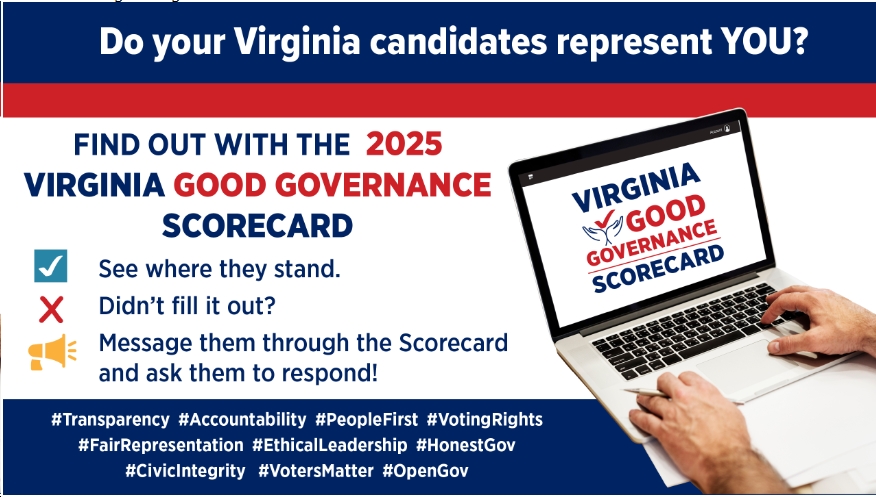by Ivy Main, cross posted from Power for the People VA
After years of wrangling, Virginia finally allows certain customers of Dominion Energy Virginia to buy solar energy from independent providers of shared solar, also known as community solar.
Don’t applaud yet, though. Dominion has used the rulemaking process and its control over project interconnection to create hurdles for shared solar that lawmakers never anticipated. High minimum bills, prolonged interconnection study requirements and expensive equipment demands are stalling projects and could drive away all but the most tenacious developers.
The blow that received the most attention came during the rulemaking process. The State Corporation Commission decided Dominion could impose a minimum bill averaging $55 per month on most customers. The minimum bill is added to the cost of the electricity itself, making shared solar so expensive that the program simply won’t be offered to the general public.
However, lawmakers had included a provision exempting low- to moderate-income (LMI) participants from the minimum bill requirement. In effect, then, the SCC’s order turned the shared solar program into a program just for LMI residents.
Indeed, the first shared solar project for LMI Virginians launched on Nov. 9 in Dumfries as a partnership between community solar developer Dimension Renewable Energy and low-income housing provider Community Housing Partners. Subscribers are told to expect savings of 10% on their electricity bills. The partners are signing up participants now but have not broken ground on a solar facility to serve them.
Sen. Scott Surovell, D-Fairfax, the author of the law creating the shared solar program, attended the launch of Dimension’s project to share in the celebration. But he still believes the program should be available to everyone. He confirmed to me he is working with the community solar industry to develop legislation addressing the minimum bill problem.
Surovell says he continues to think a minimum bill is necessary; the question is what fee is “commercially feasible to community solar programs” while still capturing “a fair amount of system costs and legacy expenses” borne by Dominion in providing service to participants when the solar facility isn’t generating electricity.
Interconnection woes: delays, high costs and ‘dark fiber’
Even if Surovell can thread that needle, the minimum bill is only the most visible problem facing shared solar in Dominion’s territory. The solar facilities have to connect to the grid, which puts Dominion in charge of the interconnection process. Developers say they are encountering long delays, high costs and unreasonable equipment requirements.
Earlier this year, the State Corporation Commission opened a docket to solicit feedback on the interconnection process — and the result was an outpouring of complaints.
As described in comments from the solar industry, Dominion requires cost-prohibitive “dark fiber” for grid protection in place of a much less expensive industry-standard approach. Dominion also lags in conducting the studies that every new project proposal must undergo at the developer’s cost, resulting in timelines that stretch 16 months or more. Additional facilities that would use the same substation aren’t considered until the study process for the first one is complete, creating further delays.
Developers also aren’t told until the final stage how much Dominion expects to charge them to interconnect their array — and even then, Dominion adds a disclaimer that its estimate is not binding. That uncertainty, says the industry, makes projects hard to finance and risky for developers.
These inefficiencies and unnecessary expenses drive up project costs and make distributed solar more expensive for customers, when it is possible at all. Tony Smith, president of solar developer Secure Futures, told me his company wanted to build a 1 megawatt shared solar facility to serve LMI customers in Augusta County. They secured the site and permits before learning that Dominion would require dark fiber and planned to charge them $1 million for the interconnection, an amount so high as to scuttle the project.
(For context, solar industry estimates put the entire cost of developing community-scale solar at an average of $1.4 million per megawatt.)
Smith says larger projects may be able to absorb exorbitant interconnection fees, but smaller projects cannot. In any case, high interconnection costs inevitably mean higher costs for customers.
Industry comments note areas where Dominion has tried to resolve issues, in particular to speed up the study timelines. But regarding other requirements, particularly those that impose the highest costs, the utility shows little willingness to budge. In some instances, the company even seems to be using its interconnection power to make private developers shoulder its own grid upgrade costs. It’s hard not to suspect that Dominion is perfectly happy making other people’s solar projects more expensive.
The solar industry’s brief describes steps taken in other states to make the process fairer, faster and less expensive. But if the staff report of the Division of Public Utility Regulation is any indication, the SCC is more likely to take a slower approach involving working groups, pilot studies and a multistep process. Smith says all this will take many years, by which time shared solar developers will have given up on Virginia and taken their business to friendlier states. He’d like to see the General Assembly address the worst problems.
Surovell says he has “heard about” the interconnection issues but “ha(s)n’t focused on it yet.” Charlie Coggeshall, mid-Atlantic director of the Coalition for Community Solar Access, told me that “interconnection is a hurdle for shared solar in Virginia and absolutely in need of improvements,” but said his organization is focused on the SCC process and for now has no plans to pursue a legislative fix.
Dominion serves about two-thirds of Virginia customers, so solving the minimum bill and interconnection problems would open shared solar to a broad swath of residents across the state. That still leaves out the other third. Advocates hope to expand the availability of shared solar into Appalachian Power territory and that of Virginia’s electric cooperatives.
A few co-ops launched their own community solar programs pre-pandemic, but most don’t offer one and apparently don’t want to. As for Appalachian Power, it has consistently opposed community solar, saying it can’t afford to lose customers. (On the other hand, Appalachian Power does not require installation of dark fiber as a condition of interconnection, in that respect making it friendlier to distributed generation — just not shared solar projects.)
Multifamily shared solar scores a win, regardless of income level

While shared solar faces an uphill battle, some good news came in a second case implementing a related program, this one authorized by 2020’s Solar Freedom legislation and designed for onsite solar at apartment buildings and condominiums. The multifamily shared solar (MFSS) program makes it possible for a landlord or condo association to install a solar facility to serve just its own residents. This program occupies a middle ground between community solar and net metering, and the enabling legislation allows Dominion to impose an administrative fee but not a minimum bill or any other charges.
Early on, the SCC had indicated a willingness to allow Dominion to shoehorn the components of the shared solar law’s minimum bill into the MFSS administrative fee. That would have certainly been the end of the program right there. In its final order, however, a common-sense definition of “administrative fee” prevailed, and the SCC ruled that Dominion could not stuff its costs of doing business into the fee.
The SCC still set the MFSS administrative fee at a curiously high $13.40 per month, accepting Dominion’s argument that it would have to do all this billing manually. The SCC also decided customers should pay certain “non-bypassable charges” amounting to an average of about $3 per month. The law doesn’t authorize these charges, but the SCC reasoned that it doesn’t prohibit them, either.
Even with Dominion taking $16 or so, the economics would not seem prohibitive. Developers caution, however, that the limited subscriber base for any MFSS project makes this program difficult to work with, even if the building is large and the property can accommodate a fair-sized solar facility. And even onsite solar arrays aren’t necessarily immune to interconnection woes.
Still, there is plenty of customer interest in the multifamily program, especially from condominium associations that may be able to finance the projects themselves. With any luck, they will pave the way for others to follow.
This article first appeared in the Virginia Mercury on November 29, 2022.


 Sign up for the Blue Virginia breaking news newsletter
Sign up for the Blue Virginia breaking news newsletter











